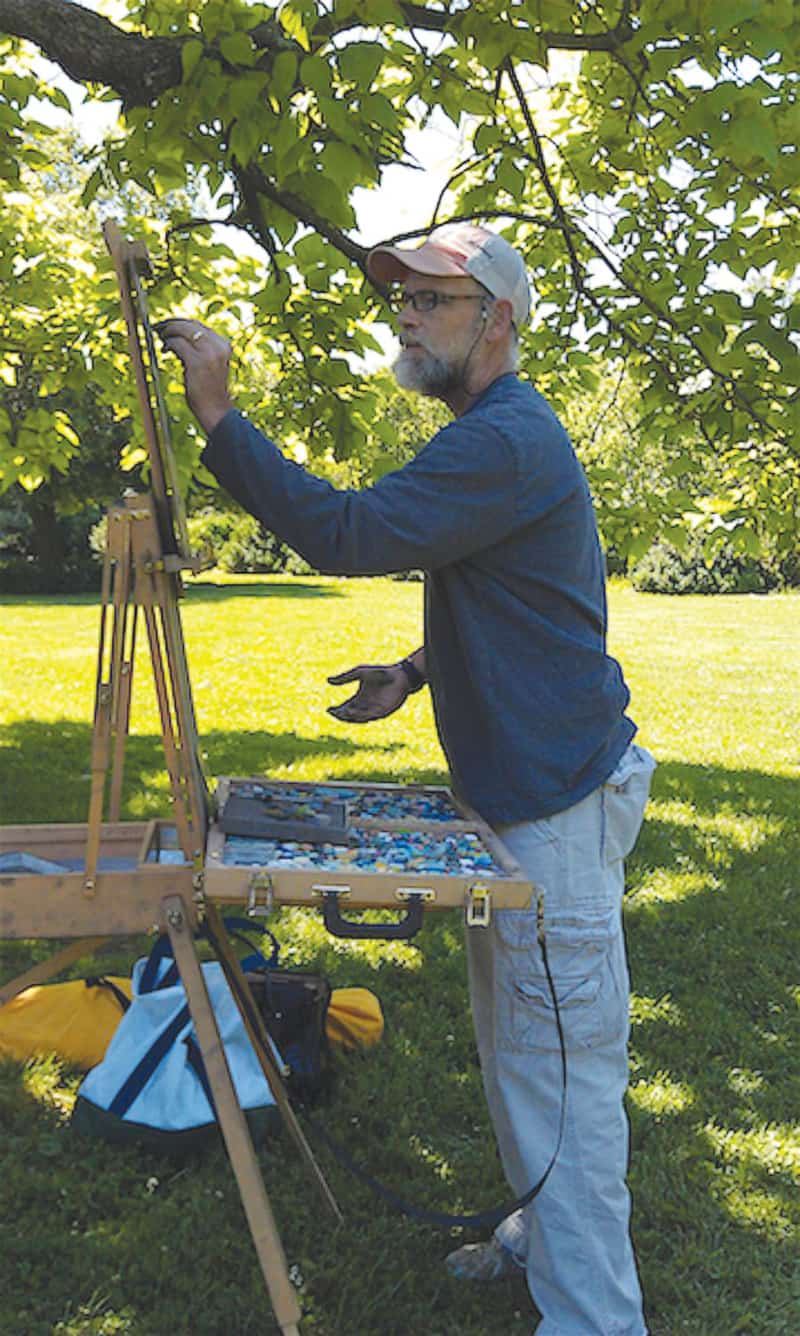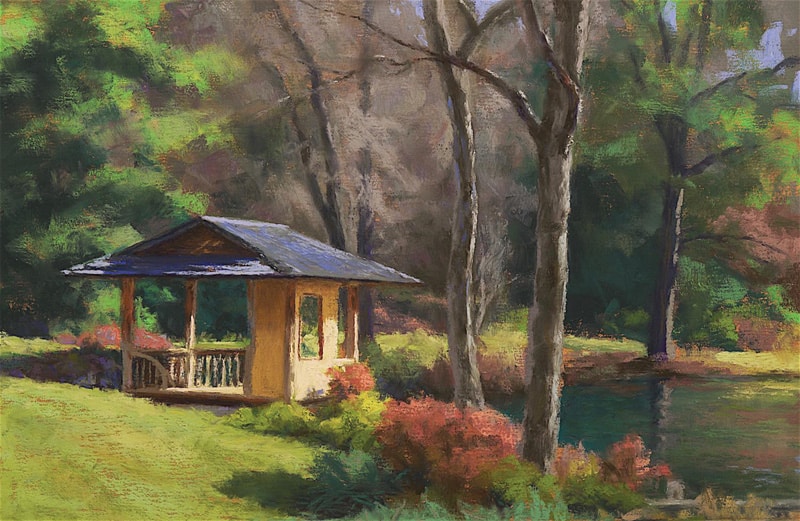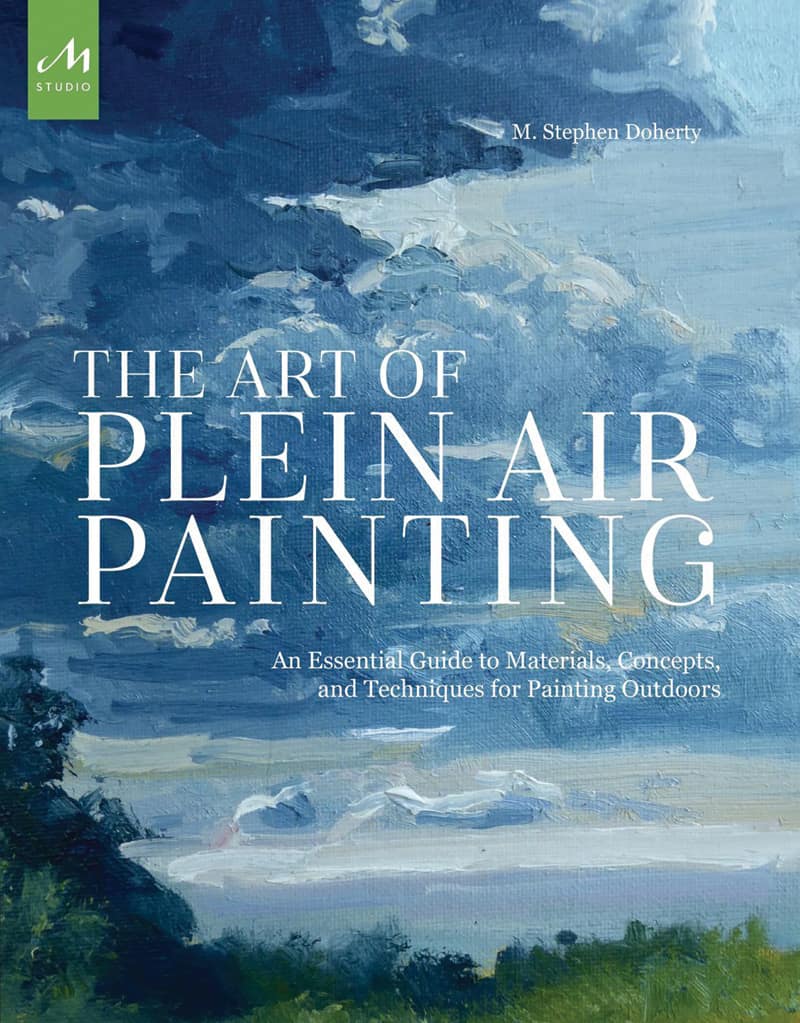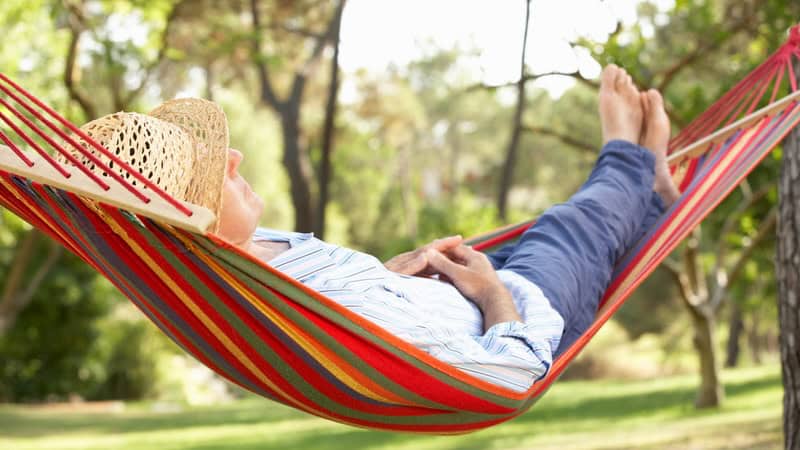Get Out There and Paint!
Plein air painting in Richmond

As winter thaws and spring flowers bloom, artists throughout the region will pack up their easels, canvases, pigments and tools in search of a picturesque road winding through the trees or water rushing over rocks. Once they find that perfect location and set up their materials, they will frame the scene to include its most interesting elements and set to work creating their impressions.
Over the past several years, painting en plein air, or in the open air, has become increasingly popular. It has grown to such an extent that it helped resurrect PleinAir Magazine, edited by Virginia resident M. Stephen Doherty, who recently published The Art of Plein Air Painting: An Essential Guide to Materials, Concepts, and Techniques for Painting Outdoors.
FRENCH ROOTS OF PLEIN AIR PAINTING
Open-air painting has played a role in artistic development since at least the 17th century, when artists such as Claude Lorrain and Nicolas Poussin painted from nature. In the 19th century, the French Barbizon School, which included artists Théodore Rousseau and Jean-Francois Millet, further popularized creating art outdoors when they gathered to paint together in the village for which the group of painters was named.
Later in the 19th century, the Impressionists built on what the artists of the Barbizon School had done to create fully finished works en plain air. “In the opinion of many academically trained artists,” Doherty explains, “Impressionism spelled the end of the oil sketch as a personal study tool (the etude) and the end of plein air painting as a fact-finding mission.”

LOCAL RICHMONDERS LEARNING THE STROKES
Maria Reardon trained in illustration at VCU in the late 1980s and worked in commercial art for about five years. At that point, she left the field because computers and photography had taken center stage and she felt her skills were not being utilized. Then, in 2005, Reardon reconnected with her fine arts background and enrolled in classes at the VMFA, the Visual Arts Center and other art groups around town. When someone told her about Virginia Plein Air Painters, she joined, relishing the opportunity to socialize with other artists who also love the outdoors. “It was a huge learning experience,” Reardon says, “because I could learn from others who were more advanced.”
After having worked as a portrait painter, artist Dan Michael developed an interest in landscapes. About 10 years ago, Michael took a workshop with Albert Handell and painted for a week on location. He furthered his education by painting repeatedly near his house. “I live in a wooded area,” Michael says, “so I started by taking my studio easel out in front of the garage and painting there.” The practice of painting regularly in one spot helped him understand how to work with natural light.
Reardon also found it helpful to paint in the same place at different times of day: “It was a fast track to figuring out how to paint out of doors; I would go back and redo a scene over and over.” That persistent effort of painting the same scene repeatedly and learning from mistakes is vital. “If you want to become good fast,” Reardon says, “you have to really put in the time and devotion to keep at it.”
CHOOSING MATERIALS
Before you set out to paint en plein air, research what types of paints, brushes, easels and other supplies to use. “You could spend a fortune on materials,” Linda Hollett-Bazouzi, lead artist for the Virginia Plein Air Painters, explains. “Instead of going out and buying what you think you need, watch other artists and talk to them about what they use.”
All the artists I spoke with emphasized that they had to make highly personal choices when buying materials; they learned from other artists, but they ultimately had to choose for themselves.

In his book, Doherty provides a detailed discussion of the many types of materials artists might choose, with insights from multiple artists and examples of his own work. He emphasizes that plein air artists must adjust to having far fewer supplies than in the studio: “Most of the equipment is compact, portable, lightweight and adaptable, and [artists] limit their supplies to paints, brushes, mediums and surfaces that are essential.”
When choosing materials, artists must consider the need to transport them, set them up, and potentially move them quickly if a storm threatens. “Practice in your own yard to get used to the equipment,” Michael advises, “and decide what you really need to take with you.”
Hollett-Bazouzi reminds artists to also remember the non-painting supplies, like bug spray, water and sunscreen, and a cover in case of rain. Although you might plan to paint only on sunny spring days, those dedicated to the craft paint in any weather. As Hollett-Bazouzi says, “Any day is a good day to plein air paint.”
JOINING THE CROWD

To try your hand at plein air painting: take an art class; join a group like the Virginia Plein Air Painters; and talk to the other artists about their materials and watch them at work. Then practice on your own at a convenient location.
Once you feel comfortable, take your creativity outside, breathe in the fresh air and capture your own impressions of Central Virginia’s scenic picturescapes.
Local art classes
- Crossroads Art Center, CrossroadsArtCenter.com
- Visual Arts Center of Richmond, VisArts.org
- Studio Two Three, StudioTwoThree.org
- Lifelong Learning Institute in Chesterfield, LLIChesterfield.org
- The Studio School at VMFA, VMFA.museum/studio-school
- Cultural Arts Center at Glen Allen, ArtsGlenAllen.com
- The Center for Creative Arts at Shady Grove, Center4CreativeArts.org
- Classes for continuing education through city and county governments
Catherine Brown studied art history for many years. She loves watching visual artists at work and prefers pen and paper to paint and canvas. You can find her at her new home on the web, writehappy.net.


